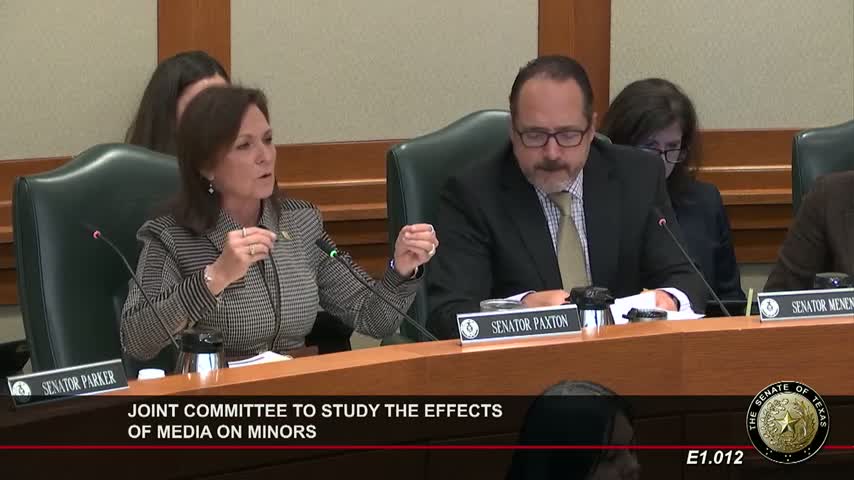Expert warns of AI's impact on child behavior and tech companies' profit motives
January 07, 2025 | Select, Interim, and Joint Committees, Senate, Legislative, Texas
This article was created by AI summarizing key points discussed. AI makes mistakes, so for full details and context, please refer to the video of the full meeting. Please report any errors so we can fix them. Report an error »

In a recent meeting of the Joint Committee to Study the Effects of Media on Minors in Texas, significant concerns were raised about the impact of media exposure on young children. The discussions highlighted the alarming reality that children, some as young as eight, are increasingly exposed to potentially harmful content, including violent and explicit material.
One of the key speakers emphasized the importance of understanding how children learn and mimic behaviors from what they observe. The speaker noted that while children are developing their language skills and trying out new words, the implications of their media consumption are troubling. The lack of comprehensive research on the long-term effects of such exposure on behavior was a central theme, with the speaker expressing frustration over the slow progress in addressing these issues.
The conversation also touched on the role of technology companies in this dilemma. It was pointed out that "watch time"—the amount of time users spend viewing content—is the primary driver of profit for these companies. This profit motive leads to the promotion of addictive content, often at the expense of children's well-being. The speaker warned that the algorithms used by these companies are designed to maximize engagement, which can result in young viewers being directed towards increasingly violent and inappropriate material.
The integration of artificial intelligence in media further complicates the situation, as it blurs the lines between real and virtual interactions. The speaker cautioned that this could lead to children being "groomed" by content that is not only harmful but also difficult to identify as artificial.
As the committee continues its work, the discussions underscore the urgent need for more research and regulatory measures to protect minors from the adverse effects of media exposure. The meeting served as a call to action for lawmakers and stakeholders to prioritize the mental and emotional health of children in the digital age.
One of the key speakers emphasized the importance of understanding how children learn and mimic behaviors from what they observe. The speaker noted that while children are developing their language skills and trying out new words, the implications of their media consumption are troubling. The lack of comprehensive research on the long-term effects of such exposure on behavior was a central theme, with the speaker expressing frustration over the slow progress in addressing these issues.
The conversation also touched on the role of technology companies in this dilemma. It was pointed out that "watch time"—the amount of time users spend viewing content—is the primary driver of profit for these companies. This profit motive leads to the promotion of addictive content, often at the expense of children's well-being. The speaker warned that the algorithms used by these companies are designed to maximize engagement, which can result in young viewers being directed towards increasingly violent and inappropriate material.
The integration of artificial intelligence in media further complicates the situation, as it blurs the lines between real and virtual interactions. The speaker cautioned that this could lead to children being "groomed" by content that is not only harmful but also difficult to identify as artificial.
As the committee continues its work, the discussions underscore the urgent need for more research and regulatory measures to protect minors from the adverse effects of media exposure. The meeting served as a call to action for lawmakers and stakeholders to prioritize the mental and emotional health of children in the digital age.
View full meeting
This article is based on a recent meeting—watch the full video and explore the complete transcript for deeper insights into the discussion.
View full meeting
